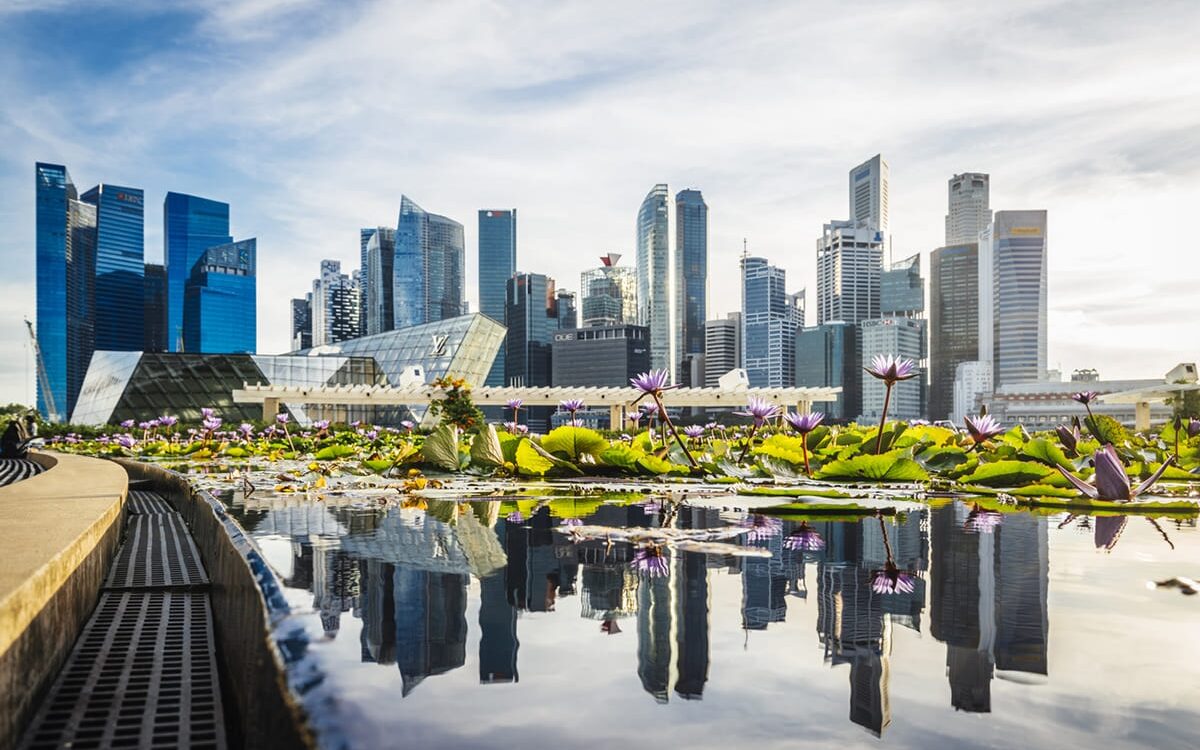The United Nations (UN) already recognizes the crucial role of the so-called Nature-Based Solutions (SBN – original acronym in Portuguese) in combating climate change and promoting urban sustainability. Over the last few years, the UN has been leading efforts to promote the implementation of nature-based solutions around the world, through initiatives such as the Intergovernmental Platform on Biodiversity and Ecosystem Services (IPBES – original acronym in Portuguese) and the Global Urban Sustainability Initiative.
IPBES is an intergovernmental group that brings together scientists and governments from around the world to assess the state of biodiversity and ecosystem services globally and propose solutions to protect them. The platform recognizes that SBNs can help protect biodiversity and ecosystem services, while providing social and economic benefits to local communities.
But what are SBNs?
Nature-Based Solutions (SBN) is an approach to dealing with environmental problems that recognizes the value of ecosystems and natural processes. These solutions involve the management and restoration of natural ecosystems, as well as the incorporation of natural elements in urban infrastructure projects.
SBNs offer a wide range of benefits, including reducing greenhouse gas emissions, protecting against natural disasters, improving air and water quality, increasing urban resilience and promoting biodiversity.
Some of the more common nature-based solutions include:
Urban green areas: Parks, gardens, squares and other green areas are essential to provide a healthy and resilient environment in cities. Green areas help to mitigate the effect of urban heat islands, reducing air temperature and improving air quality. Furthermore, these green areas also provide a haven for biodiversity, improve people's quality of life and can even increase real estate value.
Green infrastructure: Green infrastructure refers to the incorporation of natural elements into urban infrastructure designs, such as green roofs, vertical gardens and green walls. These elements help absorb rainwater and reduce surface water runoff, reducing the risk of flooding. In addition, green infrastructure can also help mitigate the effect of urban heat islands, improve air quality and provide habitat for biodiversity.
Restoring natural ecosystems: Restoring natural ecosystems such as forests, wetlands and coral reefs is one of the most powerful nature-based solutions for mitigating climate change and protecting local communities. Natural ecosystems help absorb carbon from the atmosphere and provide protection from natural disasters such as floods, storms and landslides.
Green farming: Green farming, which focuses on sustainable farming practices, is a nature-based solution that can help reduce greenhouse gas emissions and improve soil health. Practices such as organic farming, crop rotation, and the integration of crops and livestock help to promote biodiversity and the resilience of agricultural ecosystems.
Nature-based solutions are a powerful and effective approach to addressing the environmental challenges faced by cities around the world. Deploying nature-based solutions can help improve people's quality of life, protect biodiversity and promote urban sustainability.
International Debates and Agreements Promote Nature-Based Solutions in Protecting Biodiversity and Combating Climate Change During UN COP15
The United Nations Conference on Biodiversity (COP 15 – Conference Of the Parties) was held in October 2021 in the city of Kunming, China. The purpose of the conference was to define a new global framework for protecting the planet's biodiversity and ecosystems for the next decade, starting in 2021.
During the conference, several topics related to biodiversity were discussed, such as the current state of biodiversity loss, the main causes of ecosystem degradation and the importance of biodiversity for human health, the economy and the well-being of societies.
One of the main topics discussed at COP 15 was the importance of SBN for the protection of biodiversity and ecosystem services. Nature-based solutions include actions such as restoring degraded ecosystems, conserving natural areas, sustainably managing natural resources, and promoting sustainable agricultural practices.
During the conference, participants also discussed the importance of implementing public policies that encourage the adoption of nature-based solutions, as well as the need to engage civil society and the private sector in protecting biodiversity.
Another important topic discussed at COP 15 was the need to include local communities and indigenous peoples in the decision-making process regarding the protection of biodiversity. Participants highlighted the importance of respecting traditional knowledge and the participation of local communities in ecosystem conservation and restoration processes.
Transforming Cities with Nature-Based Solutions: How the World's Leading Sustainability Cities Are Leading Innovation in Urban SBNs
Leading sustainability cities are leading the way in using Nature-Based Solutions (SBN) to create more resilient and sustainable communities. These cities are demonstrating a strong commitment to adopting an innovative and sustainable approach to urban management, integrating nature-based solutions into their infrastructure and service projects.
Among leading cities in sustainability, Singapore is an excellent example of how SBN can be used to create greener and healthier urban environments. The island city-state has one of the most extensive networks of urban parks and gardens in the world, as well as green roofs, green walls and natural drainage systems that collect and reuse rainwater.
Copenhagen, Denmark is another city that is leading the way in urban sustainability. The city is implementing a range of nature-based solutions, including creating new green areas, building green roofs on public and private buildings, and using trees and plants to reduce water runoff and improve air quality.
In North America, Vancouver, Canada is a leading sustainability city that is making strides in implementing nature-based solutions. The city has a plan to become the greenest city in the world by 2020, which includes creating new green areas, encouraging the use of public transport and adopting sustainable building technologies.
Another city that is leading the way in urban sustainability is Amsterdam, the Netherlands. The city is adopting nature-based solutions to make its canals cleaner, creating green areas around its buildings and encouraging the use of bicycles as a means of transport.
These sustainability-leading cities are just a few examples of how SBNs are being used to create healthier, more resilient and sustainable urban environments around the world. As more cities embrace nature-based solutions in their infrastructure and service designs, they can help reduce their carbon footprint and create greener, healthier communities for their citizens.
Nature-Based Solutions Are Important for Countries to Achieve Global Carbon Reduction Targets and Combat Climate Change
Global carbon reduction targets are a major focus of international efforts to combat climate change. However, there is a growing consensus that simply reducing carbon emissions will not be enough to achieve climate targets. It is also necessary to adopt nature-based solutions (SBN) to protect and restore ecosystems and ecosystem services, such as regulating the climate, protecting biodiversity and reducing climate risks.
Nature-based solutions are a complementary approach to carbon reduction targets, as they help to protect and restore natural ecosystems, which are important carbon sinks and providers of ecosystem services. Furthermore, SBNs can provide additional benefits such as reducing the risk of natural disasters and improving food and water security.
The adoption of SBN on a large scale can significantly contribute to the mitigation of climate change and adaptation to its effects, in line with the Paris Agreement. The overall goal of the Agreement is to limit the rise in global average temperature to less than 2 degrees Celsius above pre-industrial levels and to pursue efforts to limit the rise in temperature to 1.5 degrees Celsius. To achieve these goals, countries must establish commitments to reduce greenhouse gas emissions and adopt adaptation and resilience strategies.
Nature-based solutions can play an important role in reducing greenhouse gas emissions if taken in conjunction with other emission reduction actions such as the transition to clean energy sources and energy efficiency. Simultaneously, SBNs can help to promote adaptation and resilience, protecting and restoring natural ecosystems, important for maintaining the ecological balance and for the survival of species.
SBN in Brazil
In Brazil, the adoption of nature-based solutions has gained strength in recent years, with initiatives in different sectors and scales. Among the main ongoing actions are the restoration of degraded areas, the reforestation of riparian forests and the implementation of more sustainable agricultural practices, which aim to promote the regeneration and conservation of natural ecosystems.
An example of a Brazilian initiative that promotes solutions based on nature is the national strategy for the recovery of native vegetation, whose objective is to recover 12 million hectares of degraded areas by 2030. The country also invests in forest restoration projects, such as the Projeto Produtor de Água, which encourages farmers to protect and restore riparian forests on their properties to improve water quality and protect biodiversity.
In addition, nature-based solutions are present in several public policies, such as the National Plan on Climate Change, which includes actions for the conservation and restoration of natural ecosystems. The country is also advancing in environmental compensation initiatives, which aim to offset the environmental impacts caused by undertakings, through investments in solutions based on nature.
However, despite the advances, there are still challenges to be faced to promote nature-based solutions in Brazil. Among the main challenges are the lack of resources and technical capacity to implement large-scale projects, the need to raise public awareness of the importance of conserving natural ecosystems, and the need to strengthen public policies to promote SBN.
Faced with these challenges, it is essential for the country to invest in public policies and in projects for solutions based on nature, to promote the conservation and restoration of natural ecosystems and contribute to the fight against climate change and the protection of biodiversity. With the adoption of solutions based on nature, it is possible to build a more sustainable and resilient future, which promotes ecological balance and people's quality of life.




